Welcome to the second post for the Plumbing Series! Our plumbing expert Sean Schaub is back to talk about hydroponic valves.
There are a ton of types of valves out there, but today we will focus on the valves used most in hydroponic systems and why they are important.
What is a valve?
The essential function of hydroponic valves is to start, stop, and control the flow of water. The type of valve you choose will be based on the function you’d like it to perform.
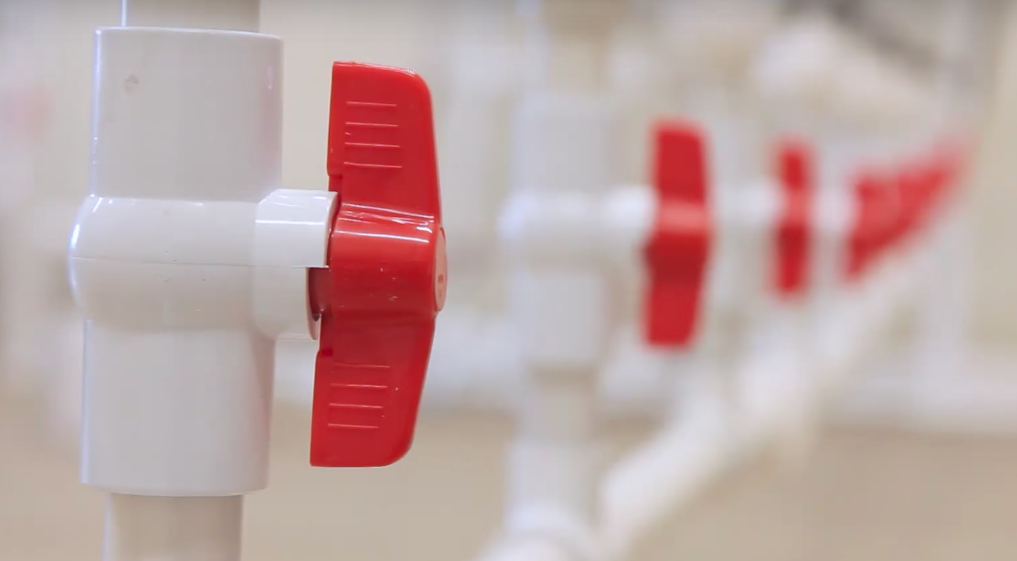
Why are valves important?
Valves will be a key element in your system whether it’s hydroponic or aquaponic. They allow the isolation of different parts of your system and give you a lot of versatility for directing water flow. Valves also control the direction of the flow and the intensity at which water passes through the system.
Sean will introduce you to the two types of hydroponic valves that we use, how they work and what their purpose is, and then show you a few examples from our ZipFarm.
Gate valves vs ball valves
The two valves that we use for plumbing our hydroponic system are gate valves and ball valves. Both come in a variety of different materials: plastic, PVC, CPVC, galvanized steel, brass, etc. We mostly use plastic or PVC. The material you choose for your valves will influence the way that you join them in your system. If you haven’t already, go ahead and check out the blog post on how to join pipes.
The ball valve
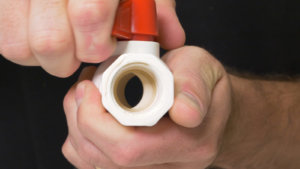 The ball valve has what looks like a ball in the center of the fitting. This ball has two openings opposite from one another—this is where the water passes through.
The ball valve has what looks like a ball in the center of the fitting. This ball has two openings opposite from one another—this is where the water passes through.
The ball is attached to a moving handle which is housed in the stationary pipe. Turn the handle, and you turn the ball, thus determining whether or not water is allowed through.
In the video above, Sean uses a ¾ inch PVC threaded valve. You can get these valves threaded or slip fit, which influences how you connect them to your system.
The main function of a ball valve is to turn on or shut off flow completely with just a quarter turn, which makes it quick and easy. You can restrict flow, which works pretty well for what we use, but it is not quite as controllable as the gate valve. We mostly use ball valves in our system.
The gate valve
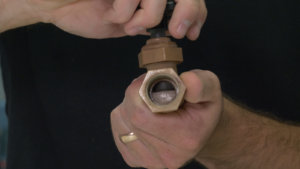 Gate valves have a handle that looks a lot more like the knob that turns your outdoor water on and off when you water your lawn. And, just like those, it takes multiple turns to turn the flow off completely.
Gate valves have a handle that looks a lot more like the knob that turns your outdoor water on and off when you water your lawn. And, just like those, it takes multiple turns to turn the flow off completely.
Gate valves give you more precise control over how much water is getting through the body of the valve. These are useful if you want to restrict flow.
You can get these with threads or with socket fittings just like the ball valves, and in a variety of materials.
Example from the farm: cutting off flow
Welcome to our ZipFarm! Sean is taking you to the farm to look at the way that we have set up our plumbing package so you can get a feel for the way hydroponic valves look and work.
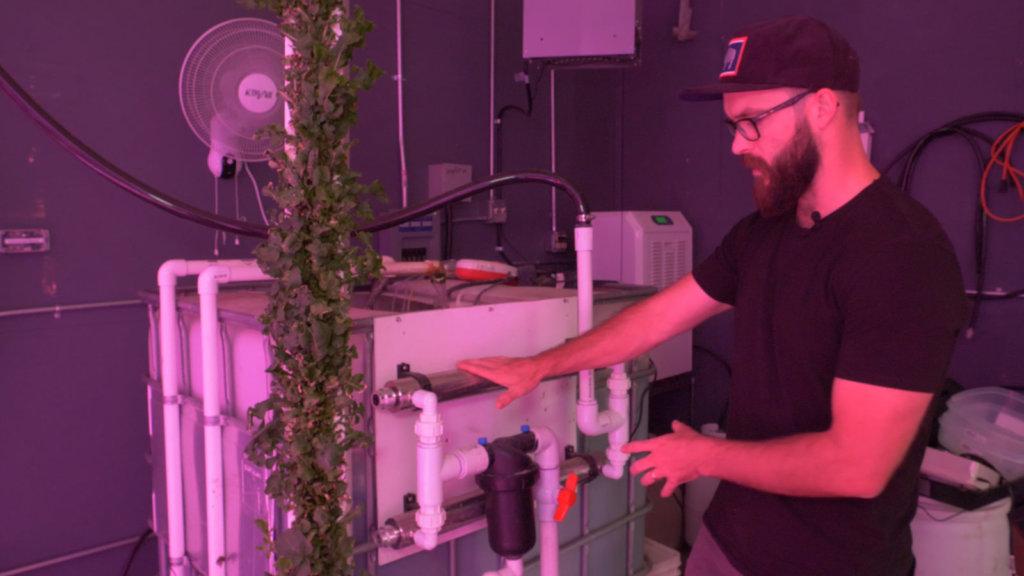
On the front of the tank, where Sean is standing, you’ll see our filtration manifold. Water comes up through the pump, through the manifold, and up and out into the farm.
The first ball valve Sean shows is next to the main farm pump. The valve is placed between the tank and the pump and, in this case, it is used to turn the water for the farm completely on or off. During normal operation, that valve will be fully open. If we ever need to turn off the water to remove the pump, clean the system, or do maintenance, the ball valve can be turned 90 degrees to cut off the tank from the pump.
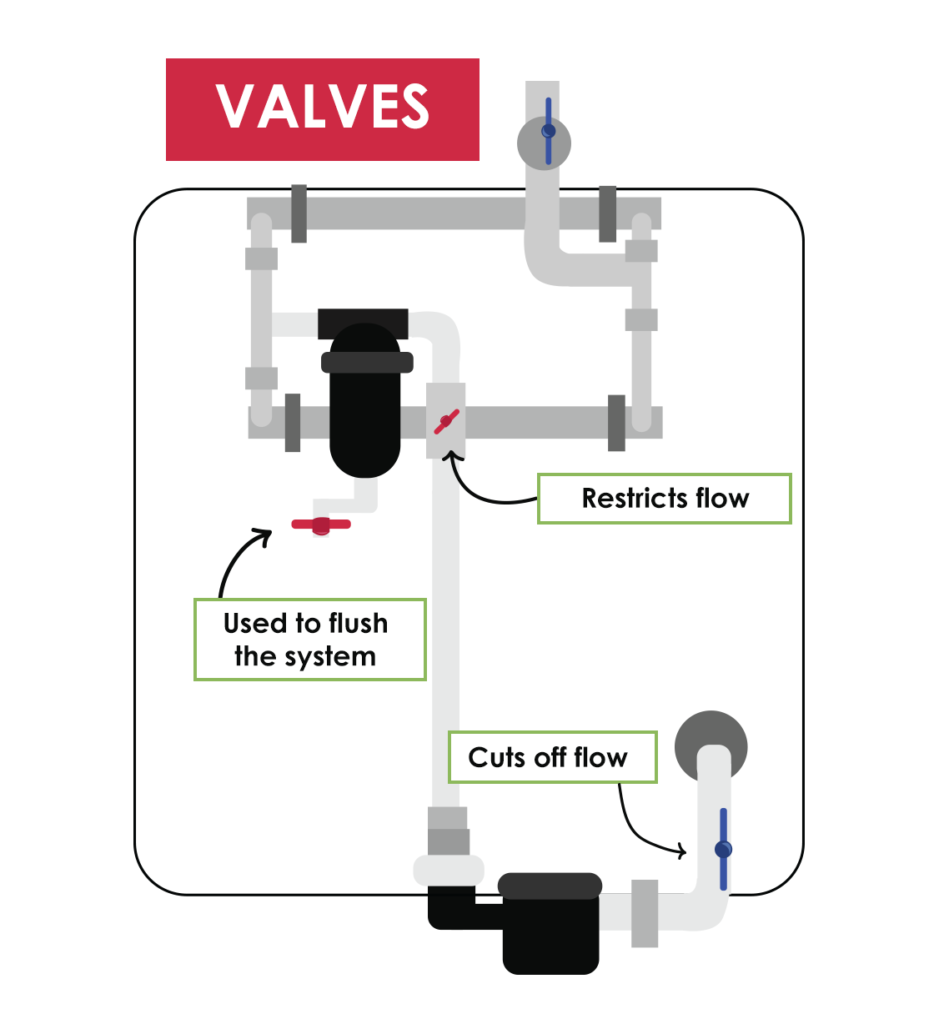
Example from the farm: restricting flow
A little bit further up the tank, we have another ball valve. You’ll notice that the handle on this valve is turned just slightly to the right, which means that it is restricting the flow of the water.
This ball valve is especially useful to farmers who have an oversized pump. The pump that we use, for example, is a little bit too big for the number of drippers in the system, but we like to have the extra capacity to scale the system in the future or flush it during cleaning. Our solution is to use this valve to restrict the water so it is at the proper flow for the system.
Beneath that valve is a third. This is another example of when the valve should be either on or off. The valve comes off of a bypass and leads to a hose fitting. We can hook up a garden hose, turn the valve on and use the nutrient water to fill up another tank.
Example from the farm: end-of-the-line
The last example is a ball valve used in a Bato bucket system. This valve is installed in the flexible vinyl tubing (which we’ll cover in the next post) at the end of the line. Although all of the drippers in this system occur before the ball valve, it’s handy to have there in case we ever need to flush out the line or drain the system.
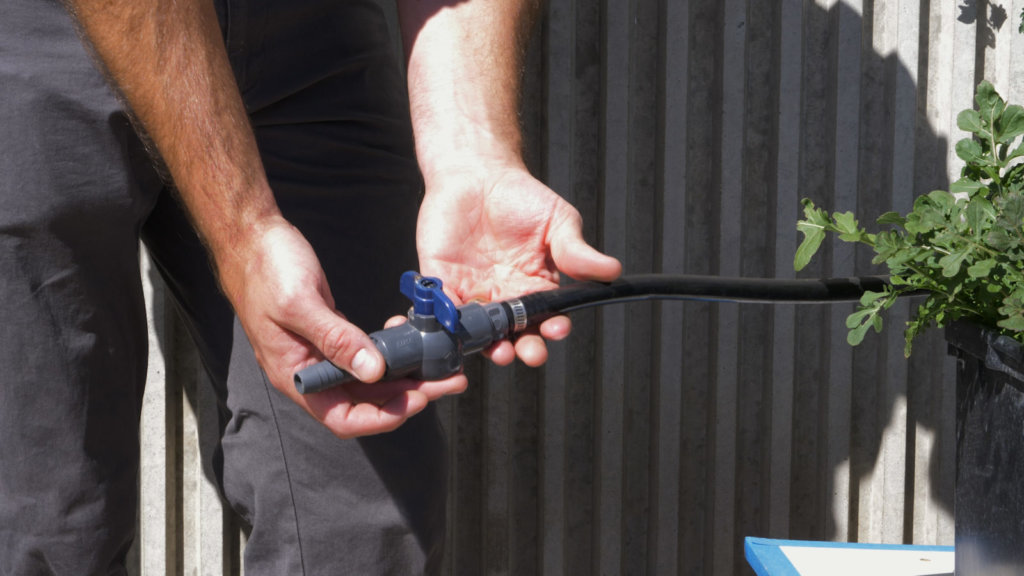
More plumbing questions?
Ball valves and gate valves are the two types of hydroponic valves that most growers use. Although these valves are all you need to restrict flow or cut it off entirely, we know that every system is different.
If you have questions about plumbing that weren’t answered here, leave them in the comments!

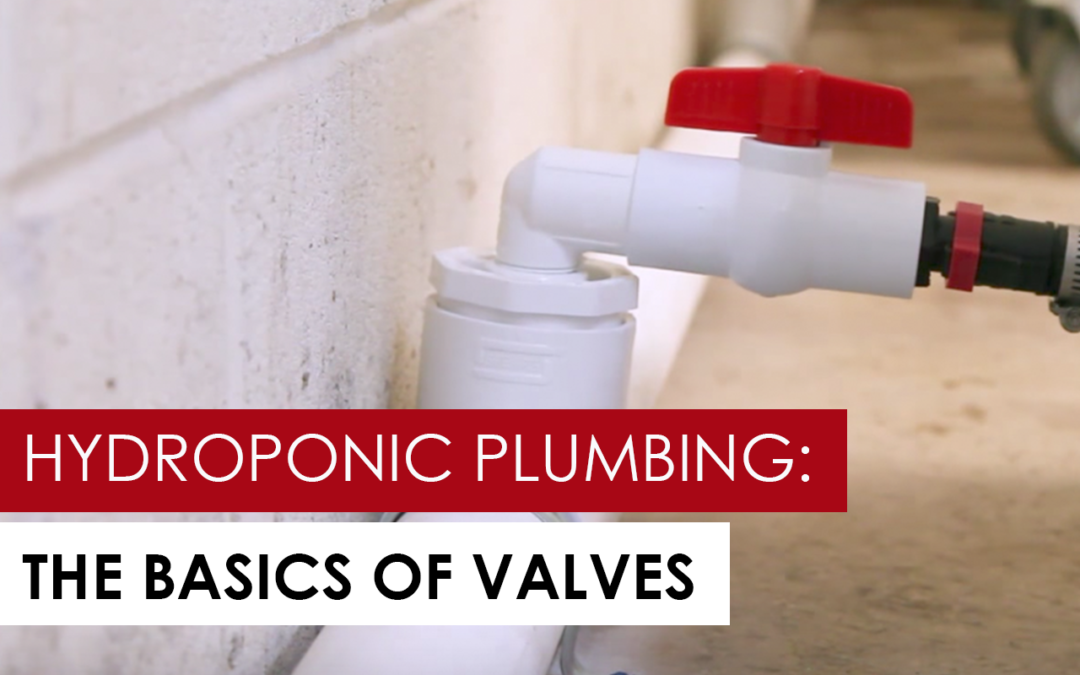

For a vertical pvc pipe system if I run a 1/2″ water main straight up from my pump,cap the top and run 5 3/8 lines with valves to my 5 4″ planter pipes,will I strain the pump?
Hi Mike!
Thanks for asking. The answer will depend on the size and type of pump you are using. Read our article on Sizing a Pump for Hydroponics or Aquaponics.
thank you so much
This is very informative article found here.
Does restricting the flow of a pump cause any harm to the pump?
Hi Pat,
You can restrict the output without harm, however, restricting the input can damage the pump.
I’m an upstart U student and a new owner of a zipgrow commercial system…are there schematics available for the plumbing package associated? Thanks